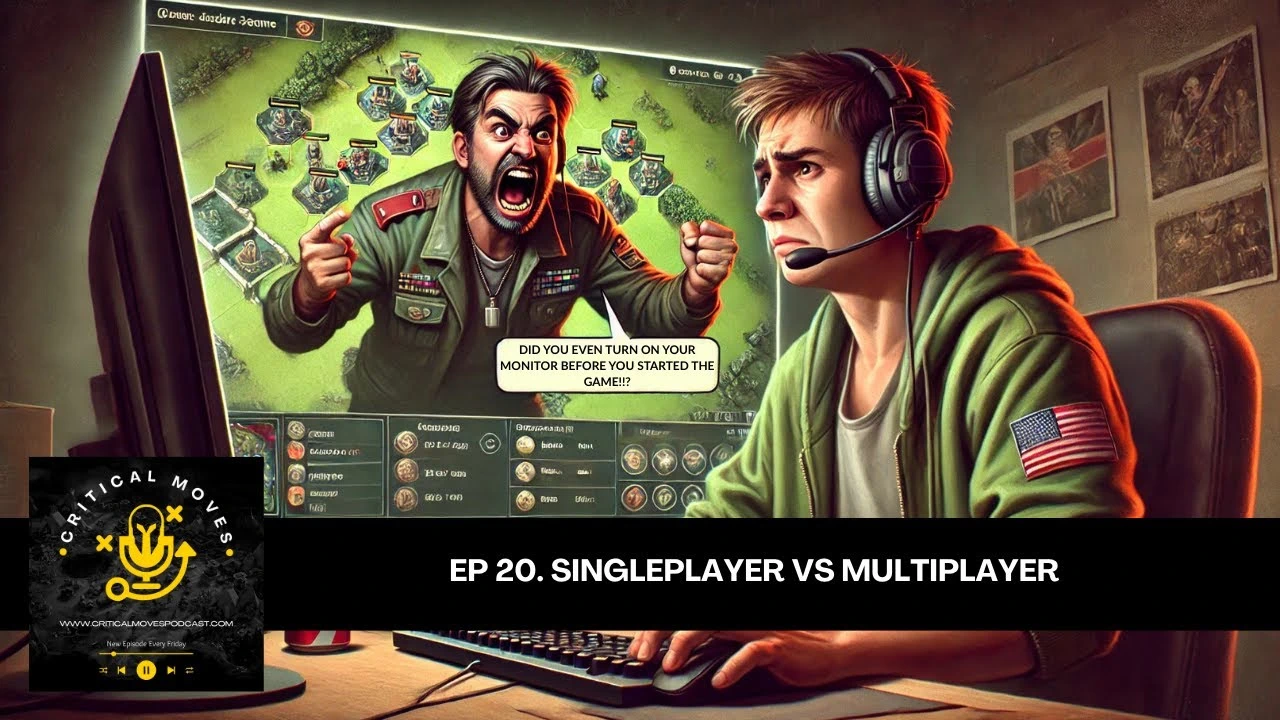Is single-player or multiplayer more important in strategy games? That’s the debate in Episode 20 of Critical Moves, where Al, Nuno, and Tim break down the commercial success, player preferences, game longevity, and the role of toxicity in online communities.
Single Player: The Commercial Powerhouse?
Al and Nuno argue that single-player remains the backbone of strategy gaming. Data suggests over 80% of players prefer single-player content, with casual gamers in particular avoiding competitive multiplayer environments. Historically, even games that became multiplayer staples – like Supreme Commander – gained traction through strong single-player campaigns first.
Paradox Interactive’s internal data supports this, showing that most players in grand strategy titles like Hearts of Iron IV and Europa Universalis IV stick to single-player. The panel agrees that while multiplayer might sustain a game long-term, single-player campaigns often drive initial sales.
Multiplayer: Longevity and Player-Driven Content
Tim champions multiplayer as the key to keeping games alive. Unlike single-player, which requires ongoing developer resources for scripted missions and AI, multiplayer thrives on player interaction. Games like Beyond All Reason and Company of Heroes have built sustained communities around competitive and cooperative play.
Nuno counters, saying he plays strategy games to relax, not compete. Multiplayer often forces optimal play, making it unappealing for those who just want to experiment with strategies without pressure. The group also debates whether strategy games could ever have a Call of Duty-level multiplayer success. While Starcraft made strides in that direction, the genre has yet to produce an enduring, dominant multiplayer game.
The Toxicity Barrier
Al raises concerns about toxicity in multiplayer communities, arguing that many single-player gamers avoid online play due to negative experiences. New players often face hostility in established communities, discouraging them from staying.
Tim, as part of the Beyond All Reason moderation team, discusses balancing player engagement with maintaining a welcoming environment. He argues that unchecked toxicity drives away potential long-term players. Nuno takes a more old-school view, seeing trash talk as part of gaming culture. Despite disagreements, all agree that competitive multiplayer naturally fosters ego-driven conflicts, which can be off-putting to casual players.
Can Strategy Games Have the Best of Both Worlds?
The episode wraps up with a discussion on whether developers can balance both single-player and multiplayer. Starcraft and Company of Heroes have managed it, but the panel agrees that it’s rare. Al notes that indie developers – who now drive the RTS genre forward – often have to pick one due to limited resources.
With Sanctuary: Shattered Sun releasing a single-player demo before committing to multiplayer, the panel sees this as a likely future model: single-player drives sales, multiplayer sustains engagement.
Final Thoughts
Single-player remains dominant in strategy games, while multiplayer provides the longevity that keeps communities alive. The divide largely comes down to personal preference – some enjoy the challenge and social aspect of multiplayer, while others prefer a stress-free experience.
Are multiplayer games too toxic? Do strategy games need a strong single-player campaign to succeed? Join the discussion! Head over to CriticalMovesPodcast.com or join us on our forums to share your thoughts.
Listeners can find this episode on Spotify, Amazon Music, Apple Podcasts, or YouTube.


